Changes in asymmetry in the cerebral hemispheres increase in Alzheimer
- Normal Liver Cells Found to Promote Cancer Metastasis to the Liver
- Nearly 80% Complete Remission: Breakthrough in ADC Anti-Tumor Treatment
- Vaccination Against Common Diseases May Prevent Dementia!
- New Alzheimer’s Disease (AD) Diagnosis and Staging Criteria
- Breakthrough in Alzheimer’s Disease: New Nasal Spray Halts Cognitive Decline by Targeting Toxic Protein
- Can the Tap Water at the Paris Olympics be Drunk Directly?
Changes in asymmetry in the cerebral hemispheres increase in Alzheimer
Changes in asymmetry in the cerebral hemispheres increase in Alzheimer. The cerebral cortex is the structural basis of advanced neurological functions.
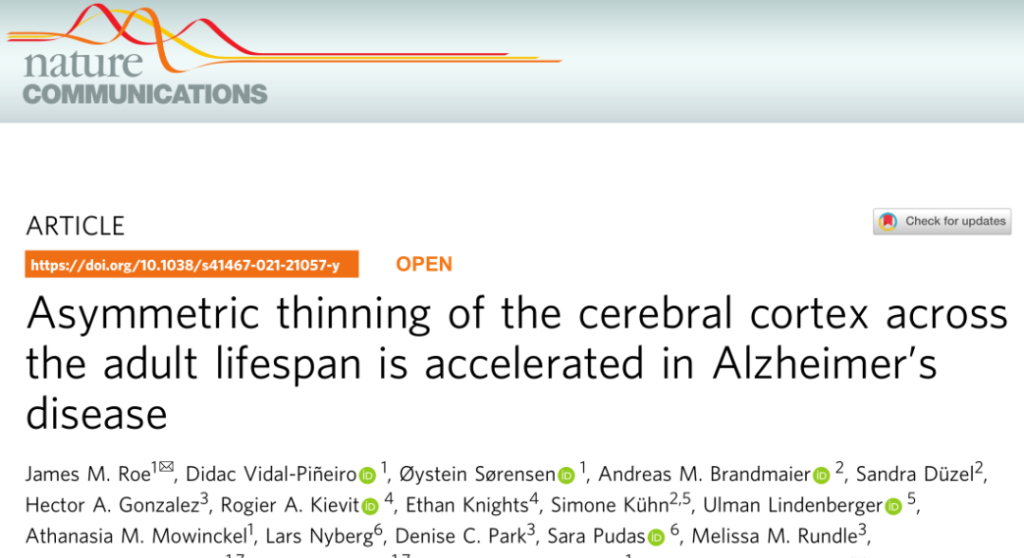
INTRODUCTION
The cerebral cortex is the structural basis of advanced neurological functions. Similar to normal aging, Alzheimer’s disease (AD) is related to the progressive destruction of brain structures and dedifferentiation of functions. The thickness of the left and right cerebral cortex is asymmetric, which is conducive to the effective construction of neural function networks in the left and right cerebral hemispheres, and may also be the basis for the execution of advanced functions such as cognition.
With age and aging, the cortex gradually becomes thinner, but the speed of thinning on both sides is not the same, so the asymmetry of the two hemispheres is also changing. In this study, the author used a large longitudinal data set from 5 healthy elderly cohorts and 1 AD patient cohort to establish the trajectory of the asymmetry changes in the cerebral cortex on both hemispheres during the process of cortical thinning and aging in the healthy elderly group, and The data of cortical asymmetry changes in AD patients were compared.
RESULTS
Cortical asymmetry continues to change with age
In order to determine the asymmetry changes in the thickness of the cerebral cortex in normal adults with age, the researchers used a total of 2,577 MRI scan samples of 1084 healthy individuals aged 20.0 to 89.4 years. The measurement and analysis of the left and right hemispheres with age The difference in the thickness of the cortex changes (Figure 1). The results showed that the asymmetry of the prefrontal lobe, anterior temporal lobe/middle temporal lobe, insula lobe, and lateral parietal lobe of the left and right brains changed significantly with age (Figure 2a), and cortical asymmetry was confirmed (Figure 2b) . The study found that the two sides of the cortex with large differences in thickness have more significant changes in symmetry during aging.
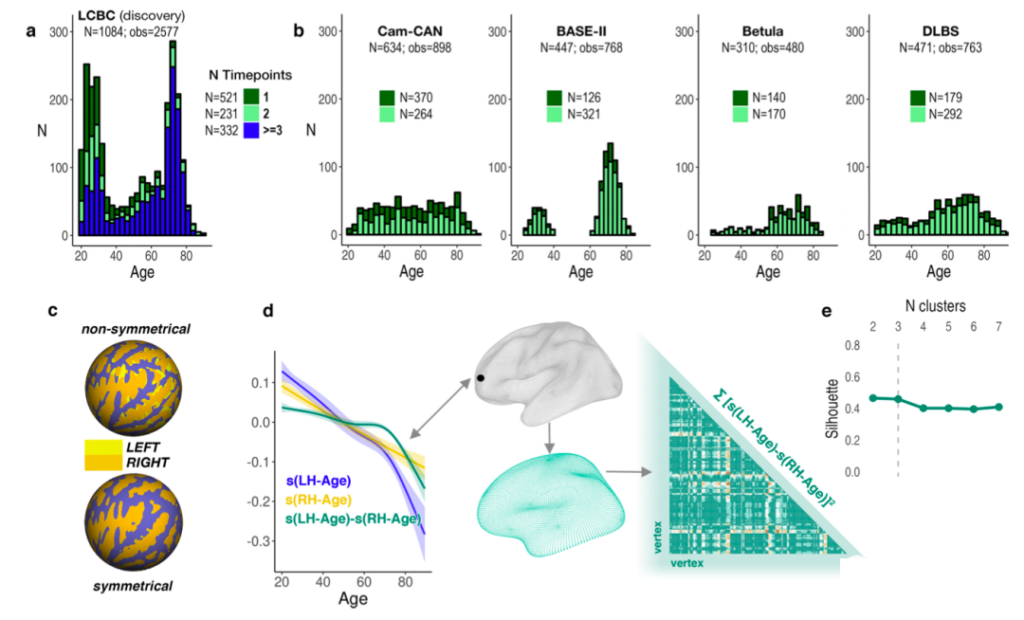
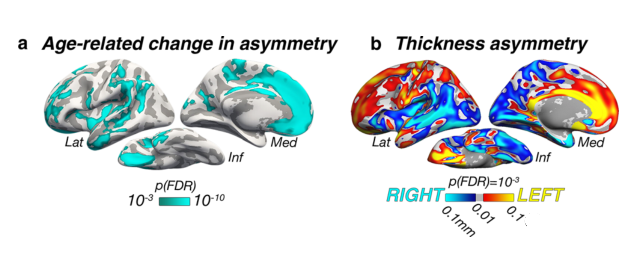
Cortical asymmetry changes and age-related trajectory establishment
In order to explore the trajectory of changes in the asymmetry of the cerebral cortex in healthy people during the aging process, the researchers conducted a cluster analysis of the data. Figure 3a–c show the final three cluster partitions. Cluster 1 reflects the medial orbitofrontal cortex, dorsolateral prefrontal cortex, and anterior temporal cortex. The analysis results show that the left side of the above area has a faster rate of thinning than the right side (Figure 3a).
In contrast, cluster 3 reflects the insula, lateral temporal parietal cortex, and anterior cingulate gyrus. The analysis results show that the right side of the above area has a faster rate of thinning than the left side (Figure 3a). The results of clusters 1 and 3 suggest that the difference in the rate of thinning of the left and right cerebral cortex leads to changes in cortical asymmetry starting around the age of 30, and the changes accelerate around the age of 60, and the thickness of the cerebral cortex on both sides of the cerebral cortex reaches the same around the age of 70.
In addition, the asymmetry of the cortex changes in the opposite trend with age, that is, the thicker side of the cortex at a young age will become thinner with age at a faster rate than the opposite side.
The researchers also tested the credibility of the above trajectory through four other independent longitudinal cohort data sets. In summary, it can be concluded that cortical asymmetry changes are one of the characteristics of aging.
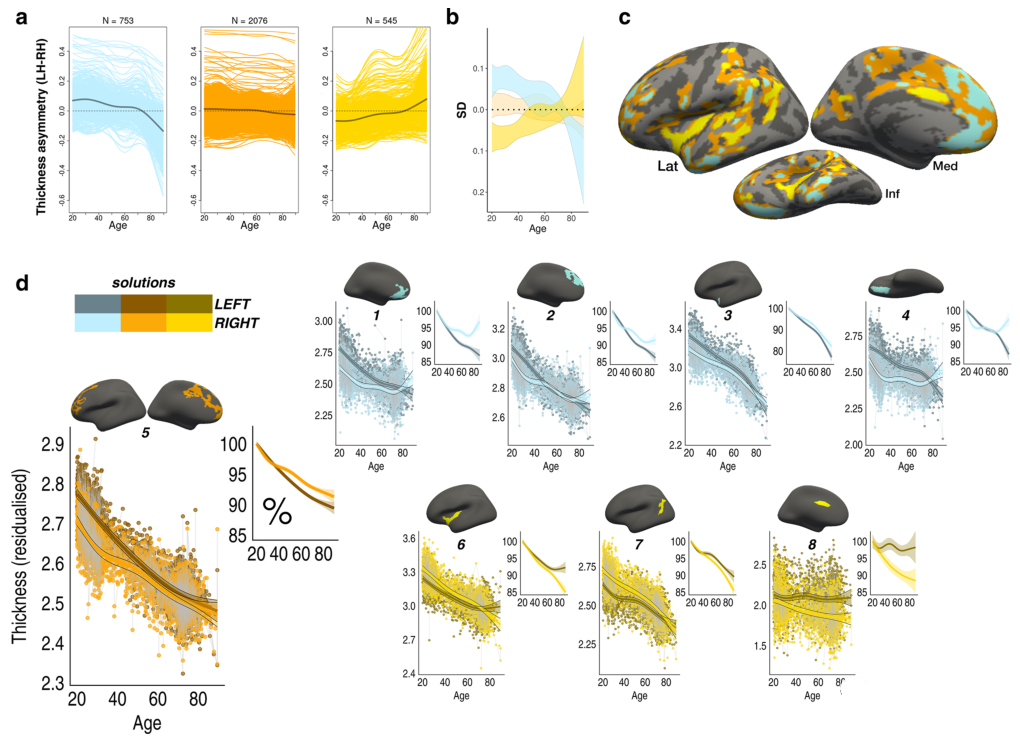
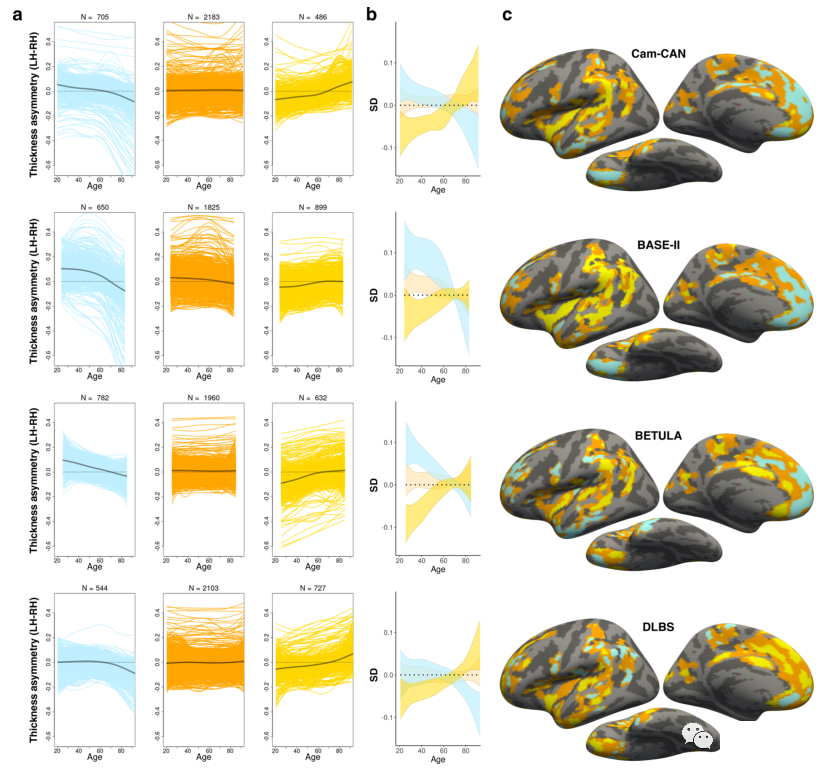
Differences in age-related cortical asymmetry changes between AD patients and healthy people
The researchers further explored whether the changing trend of the asymmetry of the cerebral cortex on both sides of AD patients is different from that of normal people. According to the same analysis method, in the frontal and temporal cortex, the left side of AD patients thins faster than the right side (Figure 5b). Compared with healthy people, the asymmetric changes in the frontal and temporal cortex are faster in AD patients.
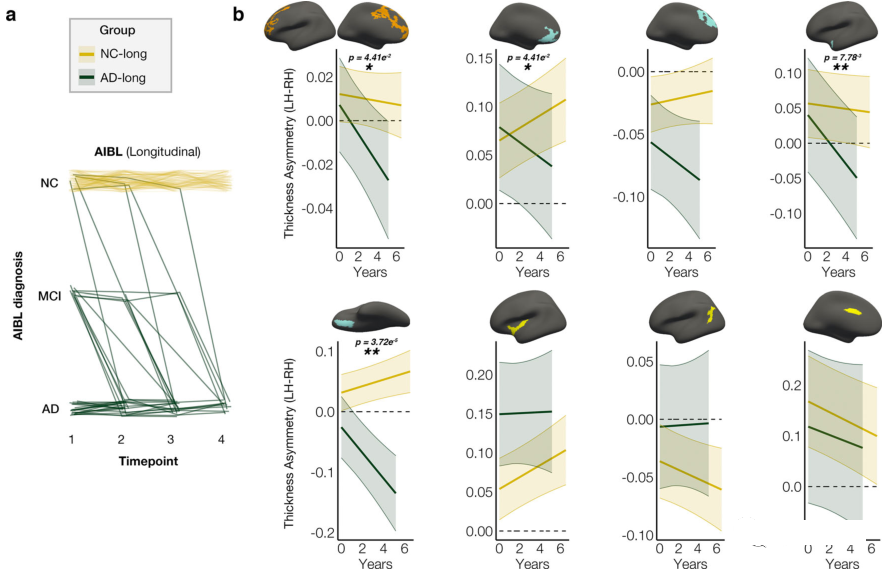
CONCLUSION
This study reveals the asymmetry changes of the human cerebral cortex in the left and right hemispheres during the aging process. With age, the cortex on both sides thins at different rates, and the cortical asymmetry changes in the opposite trend; and a credible health is established The age-related cortical asymmetry change trajectory model of the population; finally, by comparing with the healthy population model, it is found that the frontal and temporal cortex of AD patients will age faster. Therefore, cortical asymmetry changes are expected to serve as a clinical marker for early diagnosis of AD patients.
(source:internet, reference only)
Disclaimer of medicaltrend.org



